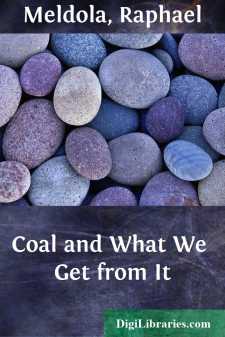Categories
- Antiques & Collectibles 13
- Architecture 36
- Art 48
- Bibles 22
- Biography & Autobiography 813
- Body, Mind & Spirit 142
- Business & Economics 28
- Children's Books 16
- Children's Fiction 13
- Computers 4
- Cooking 94
- Crafts & Hobbies 4
- Drama 346
- Education 46
- Family & Relationships 57
- Fiction 11829
- Games 19
- Gardening 17
- Health & Fitness 34
- History 1377
- House & Home 1
- Humor 147
- Juvenile Fiction 1873
- Juvenile Nonfiction 202
- Language Arts & Disciplines 88
- Law 16
- Literary Collections 686
- Literary Criticism 179
- Mathematics 13
- Medical 41
- Music 40
- Nature 179
- Non-Classifiable 1768
- Performing Arts 7
- Periodicals 1453
- Philosophy 64
- Photography 2
- Poetry 896
- Political Science 203
- Psychology 42
- Reference 154
- Religion 513
- Science 126
- Self-Help 84
- Social Science 81
- Sports & Recreation 34
- Study Aids 3
- Technology & Engineering 59
- Transportation 23
- Travel 463
- True Crime 29
Coal and What We Get from It
by: Raphael Meldola
Description:
Excerpt
CHAPTER I.
“Hier [1771] fand sich eine zusammenhängende Ofenreihe, wo Steinkohlen abgeschwefelt und zum Gebrauch bei Eisenwerken tauglich gemacht werden sollten; allein zu gleicher Zeit wollte man Oel und Harz auch zu Gute machen, ja sogar den Russ nicht missen, und so unterlag den vielfachen Absichten alles zusammen.”—Goethe, Wahrheit und Dichtung, Book X.
To get at the origin of the familiar fuel which blazes in our grates with such lavish waste of heat, and pollutes the atmosphere of our towns with its unconsumed particles, we must in imagination travel backwards through the course of time to a very remote period of the world’s history. Ages before man, or the species of animals and plants which are contemporaneous with him, had appeared upon the globe, there flourished a vegetation not only remarkable for its luxuriance, but also for the circumstance that it consisted to a preponderating extent of non-flowering or cryptogamic plants. In swampy areas, such as the deltas at the mouths of great rivers, or in shallow lagoons bordering a coast margin, the jungles of ferns and tree-ferns, club-mosses and horse-tails, sedges, grasses, &c., grew and died down year by year, forming a consolidated mass of vegetable matter much in the same way that a peat bed or a mangrove swamp is accumulating organic deposits at the present time. In the course of geological change these beds of compressed vegetation became gradually depressed, so that marine or fresh-water sediment was deposited over them, and then once more the vegetation spread and flourished to furnish another accumulation of vegetable matter, which in its turn became submerged and buried under sediment, and so on in successive alternations of organic and sedimentary deposits.
But these conditions of climate, and the distribution of land and water favourable to the accumulation of large deposits of vegetable matter, gradually gave way to a new order of things. The animals and plants adapted to the particular conditions of existence described above gave rise to descendants modified to meet the new conditions of life. Enormous thicknesses of other deposits were laid down over the beds of vegetable remains and their intercalated strata of clay, shale, sandstone, and limestone. The chapter of the earth’s history thus sealed up and stowed away among her geological records relates to a period now known as the Carboniferous, because of the prevalence of seams or beds of coal throughout the formation at certain levels. By the slow process of chemical decomposition without access of air, modified also by the mechanical pressure of superincumbent formations, the vegetable deposits accumulated in the manner described have, in the lapse of ages, become transformed into the substance now familiar to us as coal.
Although coal is thus essentially a product of Carboniferous age, it must not be concluded that this mineral is found in no other geological formation. The conditions favourable for the deposition of beds of vegetable matter have prevailed again and again, at various periods of geological time and on different parts of the earth, although there is at present no distinct evidence that such a luxuriant growth of vegetation, combined with the other necessary conditions, has ever existed at any other period in the history of the globe....


